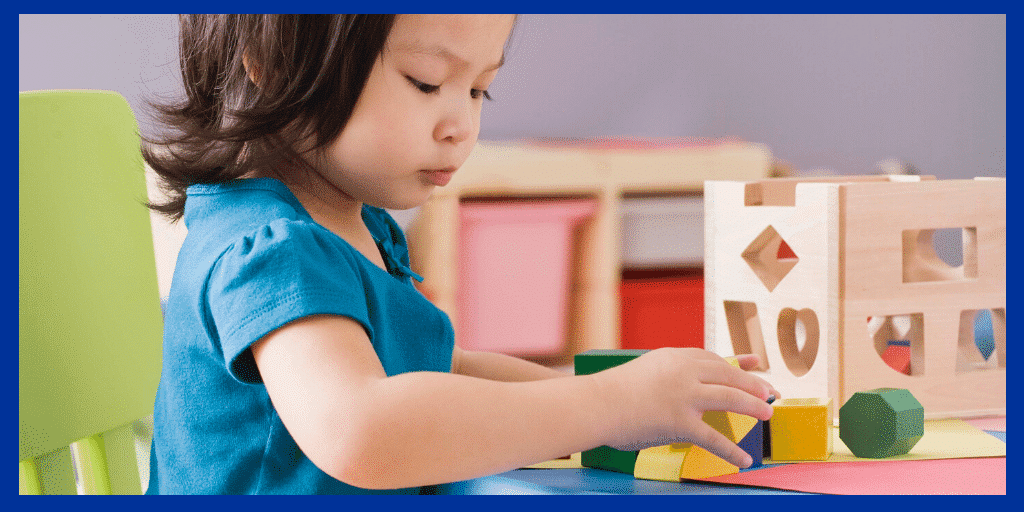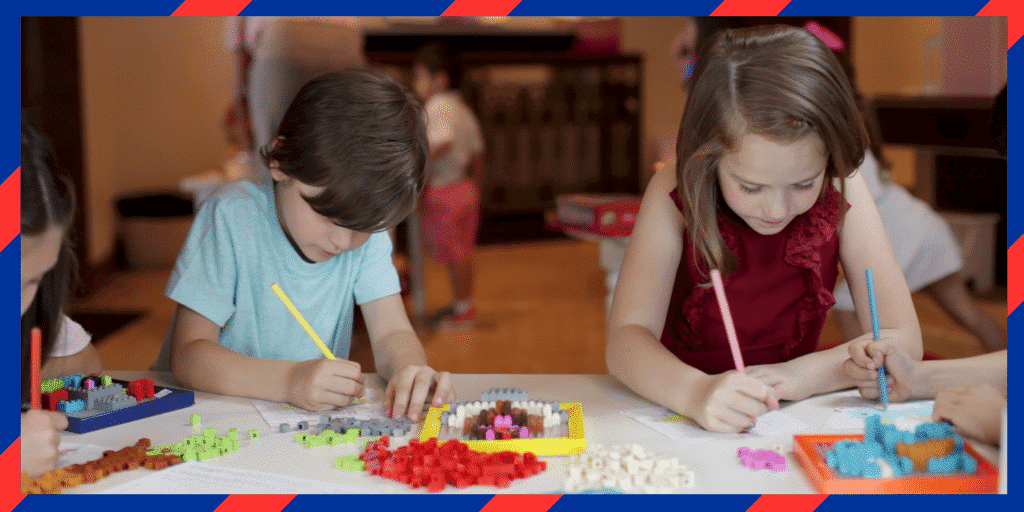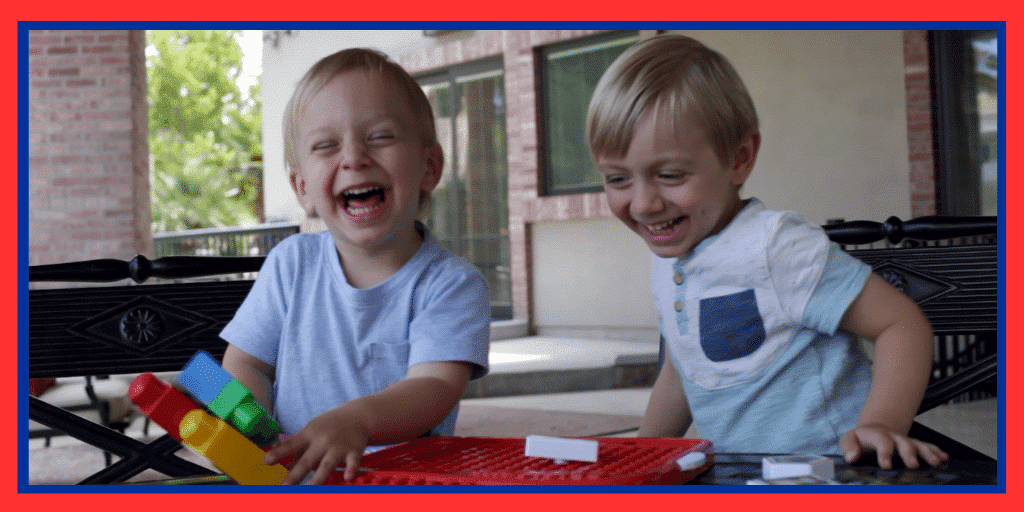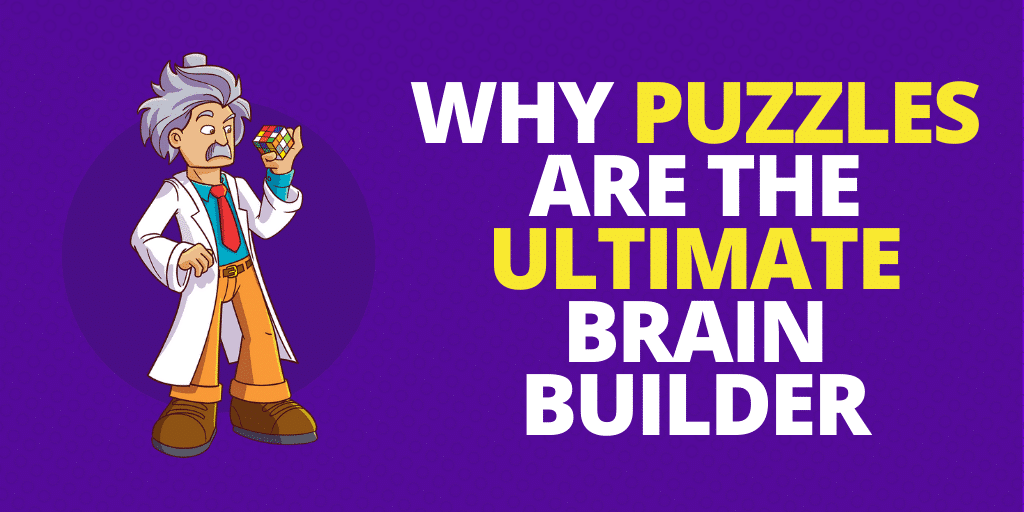Why Educational Puzzles Are The Ultimate Brain Builder
- Educational puzzles, “…Like BrickMates® naturally engage a number of cognitive areas at once: visuospatial functioning, executive functioning (planning and organization) as well as higher order categorization and even early language skills. Brick mates, like Legos, move seamlessly from more organized, step-by-step driven tasks to free-form creative play. These are brain-building toys that can be used independently, cooperatively or even therapeutically. They’re magic.”
- STEM-certified educational puzzles are different than regular puzzles because it fulfills all qualifications for well-rounded learning. STEM doesn’t discriminate, it’s designed for all children regardless of socioeconomic status or IQ. It keeps children engaged to the point they’re retaining information as much as 20% higher than there peers. It’s a structured play where teachers provide open-ended questions allowing kids to explore and learn from mistakes.
- Social-emotional skill development using educational puzzles is another reason why it’s the ultimate brain builder. These skills help us manage emotions, build healthy relationships, show empathy and understanding. It helps us connect with others and express ourselves in an appropriate way in different environments with different types of people.

Brain Builder Puzzles for Early Childhood Development

Did you know that daycare and pre-school teachers across the world rely on puzzles as a daily activity for their classroom?
It’s one of the best ways to get children to develop all different types of skills in one sitting. Plus, toddlers and pre-schoolers LOVE puzzles since it’s so mentally stimulating in all the right ways.
Most daycare directors have a requirement that toys should meet in order to create a happy environment full of creative learning and growing.
Educational puzzles can range from STEM-certified peg puzzles, shape sorters, 3d jigsaw puzzles, and even Lock and Learn puzzles.
Each puzzle has a different objective for learning, but include all of the core values of puzzles. We’ll get into that soon.
First, let me unveil the checklist of a director.
- Age-appropriate – 3 piece puzzles are good for 1-2-year-olds. 10 pieces are good for 3-year-olds. This can be modified of course depending on individual ability.
- Long-lasting and safe – no toys that break easily into small pieces
- Develops multiple areas of cognitive development – Learning spatial awareness, problem-solving, memory, processing information, language learning, perceptual skill are a few important ones.
- Develops multiple areas of physical development – Hand-eye coordination, fine and large motor skills are strengthened
- Is it fun? – Fun is a priority for all kids. If they don’t enjoy it, they will never play with it.
- Real-world imitation – Do toys make noises of animals, look like animals, and are they relatable to the real world? This helps children make connections to understand their surroundings.
What teachers and directors love the most about educational puzzles is that it fits all of the needs and wants they have for proper development.
The difference between classic puzzles and newer ones like the Lock and Learn and Stack by Numbers is they include even more stimulation and learning.
That’s why daycare, professors, Harvard instructors, and toy experts recommend them more than others.
One of the best things ever said, “What a delight it was to watch a number of children play with Brick Mates®! No screens, no sequins and no television characters. But more importantly, these toys naturally engage a number of cognitive areas at once: visuospatial functioning, executive functioning (planning and organization) as well as higher order categorization and even early language skills. Brick mates®, like Legos®, move seamlessly from more organized, step-by-step driven tasks to free-form creative play. These are brain-building toys that can be used independently, cooperatively or even therapeutically. I can’t say enough about them, they’re magic.” – Melinda Kulish, Ph.D Instructor, Harvard Medical School Neuropsychologist and Clinical Psychologist
Now that you know why professionals love it so much, here is the break down on how it builds cognitive development.
Educational Puzzles Build Cognitive Development

Researchers say the best way to help your child is to foster their cognitive development as soon as he or she is born.
By doing this, you are providing a proper foundation for your child’s ability to not only learn and grow but efficiently get through the challenges they will face later on in life.
By equipping them with skills to assess problems, work through failure, and to adapt and grow they will be well-rounded leaders and team players.
Research shows that children who can distinguish sounds at 6 months of age are better at acquiring the skills for learning to read and 4 and 5 years.
If your child is past this stage, don’t fret or feel like you’ve failed as a mom or dad. It’s not too late, I promise!
Our children are still growing and have so much potential. It’s never too late to help your child.
Is your child is 2,3, or 4? You’re still fine! Are they in elementary school already? That’s okay too.
The first 7 years of life are extremely important in how cognitive and emotional development is shaped. The pathways that are made can continually modify based on the experiences we give them. Even though it’s best to start as young as possible, that doesn’t mean it’s ever too late!
One of the greatest ways to strengthen your child’s brain is to give them “brain breaks”. Short bursts of activity help with higher learning. By doing a 15-minute physical activity and then sitting down to “play” with educational puzzles, they will feel refreshed and ready to tackle a new challenge while building their muscle (the brain).
As you add a variety of educational puzzles to support cognitive development, you give your child’s brain the chance to constantly wire new pathways.
When new pathways are wired, the brain is establishing a new connection. That new connection will help later on when trying faced with different situations that are unfamiliar or familiar.
The point I’m trying to make is to better help, educational puzzles not only improve brain activity, gross motor skills and balance and coordination, but faster processing and visual perception for reading, organization, problem-solving and critical thinking.
Brain puzzles like educational puzzles require logic or vertical analysis in order to solve it too. Vertical analysis is where you practice what you’re learning.
Here’s how working with educational puzzles builds cognitive development and how they practice as they play.
- They require us to recognize shapes and colors which enhances short-term memory.
- Educational puzzles help toddlers and children improve hand-eye coordination which will help in so many areas in life.
- It can help enhance pattern recognition. This will help later on in Math and Science.
- Rotating pieces in space to determine how they fit improves abstract thinking skills. This will help with various subjects and aid in developing problem-solving skills.
- Help promote connections between the left, or logical, side of the brain and the more creative, intuitive right side. Enough said there!
- Scientists have also found that accurate placement of a piece can trigger the release of dopamine, a key neurotransmitter for regulating mood, concentration, and motivation.
While this sounds like it can be done with any puzzle, a STEM-certified puzzle is what makes the largest difference!
Let me quickly break down why STEM-certified educational puzzles will better shape cognitive development.
STEM toys and activities take regular activities and give them a few upgrades to ensure they help your child connect the dots between multiple subjects of learning.
Essentially, there are 4 skills that your child will use while playing with one toy:
- Generality – Explains a universal math problem-solving principle.
- Simplicity – Provides clarity without being too easy.
- Eureka factor – The moment your child pushed through the times they’ve failed, practiced their critical thinking skills, lateral thinking skills, and figured out how to solve their problem.
- Entertainment factor – It has to be engaging and fun. Naturally, we do better when we enjoy what we’re doing even when it gets tough.
And the best part is…
STEM doesn’t discriminate, it’s designed for all children regardless of socioeconomic status or IQ.
It keeps children engaged to the point they’re retaining information as much as 20% higher than there peers.
It’s a structured play where teachers provide open-ended questions allowing kids to explore and learn from mistakes.
Lastly, STEM is skill based too.
Kids will develop communication skills effectively which are just as important as technical knowledge in a particular field or academic subject.
Want to figure out how to choose the right puzzle for your child’s needs? Read this blog.
Developing Emotional and Physical Skills using Puzzles

When your toddler is throwing tantrums and gets flustered easily, that is normal.
Remember, they are still learning words and what their emotions mean to them and how to communicate it to you.
So, what’s one of the greatest ways to help your child build their vocabulary, emotional recognition, and processing?
Educational puzzles, of course!
Social-emotional skills help us manage emotions, build healthy relationships, show empathy and understanding. It helps us connect with others and express ourselves in an appropriate way in different environments with different types of people.
One of the proudest mom moments is when you see your little one get frustrated then work through the problem using their “big boy” or “big girl” words to ask for help.
They want to do it themselves but need direction. That’s exactly what educational puzzles do.
Here’s how:
Vocabulary: inset puzzles tend to have pieces in categories. This helps help target specific vocabulary categories like farm animals, ocean animals, numbers, letters, and colors.
Basic Concepts: Use puzzles to learn concepts like opposites and colors. Learning big vs small farm animals for example.
Verbs: Educational puzzles help your toddler describe if the farm animal is eating, walking, jumping, or sleeping.
Social/pragmatic skills: Although it’s a great independent activity and around 2 years old they are playing next to friends, sometimes they will play with their friends for a short period. Doing this in pairs helps them learn eye contact, topic initiation, topic maintenance, topic closure, personal space, sharing, and asking/answering questions.
By learning how to communicate you are giving them the tools they need for emotional development.
As they learn to be patient through anger and frustration and excitement while playing, they are learning necessary emotional intelligence skills.
With that said, you’re probably wondering if puzzles are a sit-down activity how can it help with physical development?
Yes, it is more than possible to have a sit-down activity to develop physical skills. WooOO! No more kids running around in circles because of a lack of mental stimulation.
Motor coordination that is well controlled is one of the requirements for each of your child’s developmental milestones.
In order to help children practice these skills, early intervention is often requested in those who need some extra attention.
Occupational therapists use educational puzzles to help children work on their motor skills because it’s such a reliable toy that builds multiple areas of development.
Let me walk you through some of the greatest benefits of using educational puzzles for physical development.
- Fine motor skills are where your child uses their thumb and finger to pick up and rotate puzzle pieces without dropping them often. The good use of thumb and position of wrist joint are important for these skills too. Small muscles facilitate proper coordination for so many essential daily activities like grooming, eating, and so forth.
- Sorting puzzles helps with cognitive development and puzzle strategy which is apart problem-solving right? This also helps their fine motor skills too.
- Gross motor skills – Non-locomotive movement (seating, standing, bending, turning, pushing and pulling) are all practiced while your child moves around and sits on the floor or chair to complete the puzzle.
- Playing with large pieces helps children to clasp which helps strengthen their hand, finger, and wrist muscles.
STEM-certified educational puzzles are one of the most versatile learning tools for your child. It checks everything off of a mom’s list of needs and wants.
Don’t forget to share this on Facebook or Twitter to help our mom tribe out there. We’re in this together!



